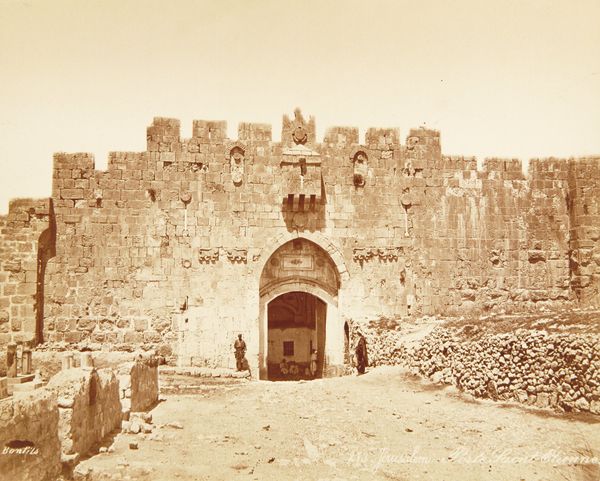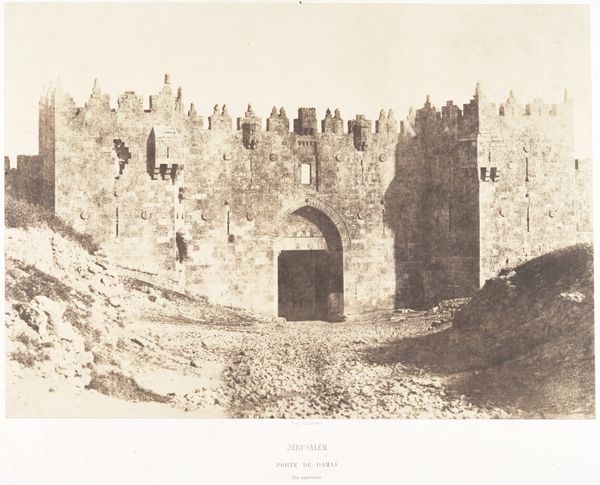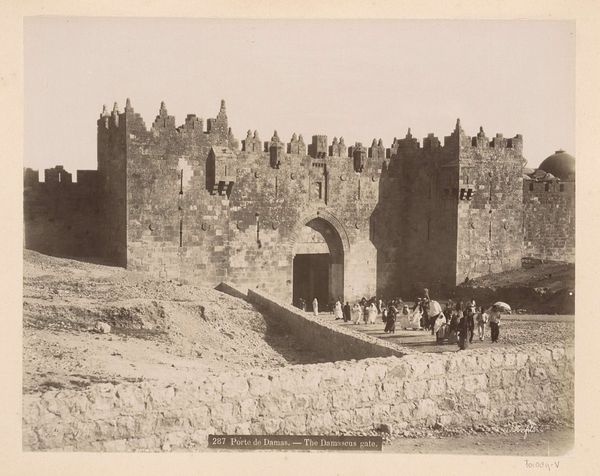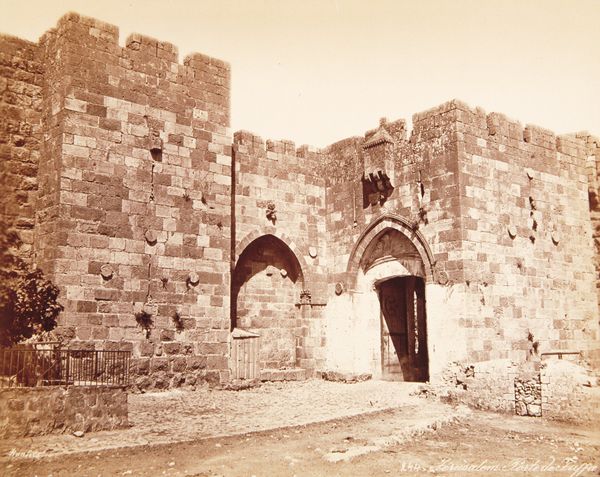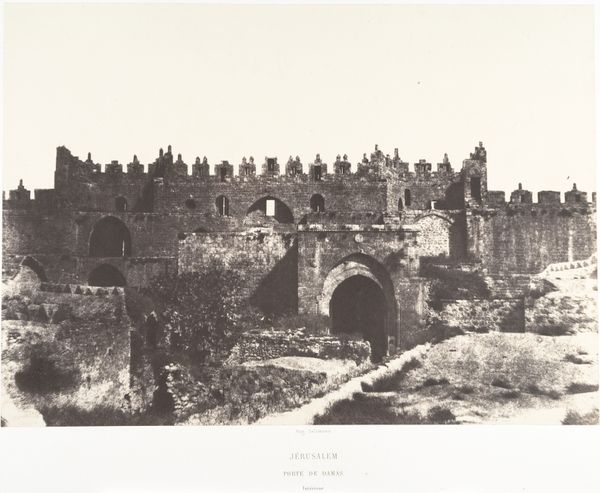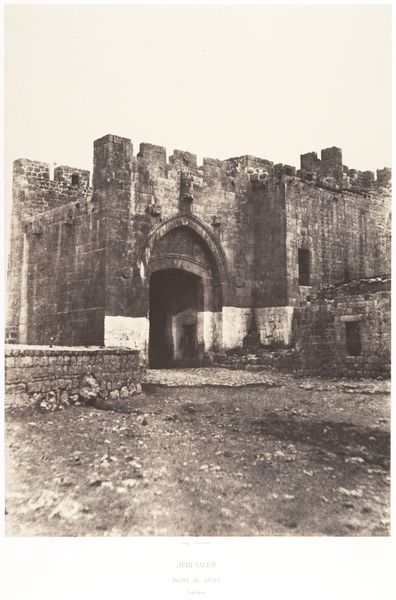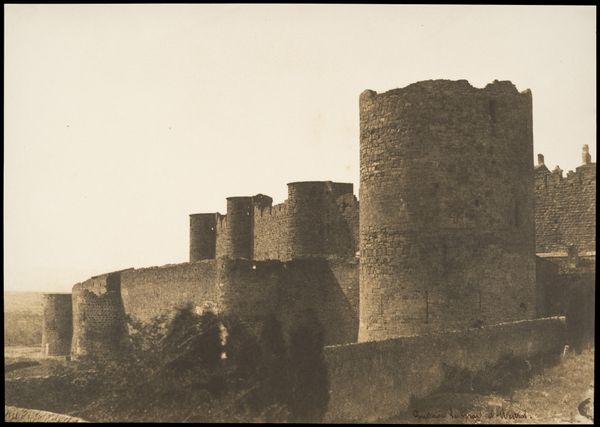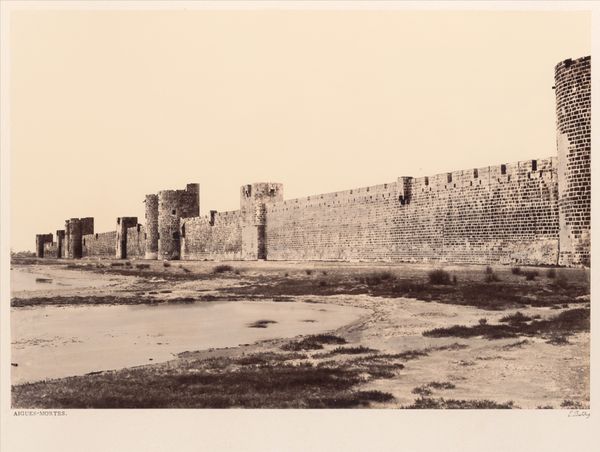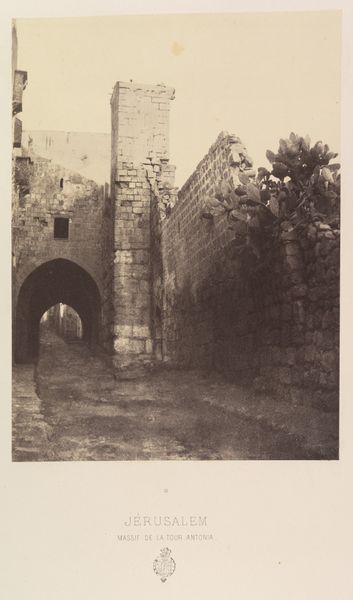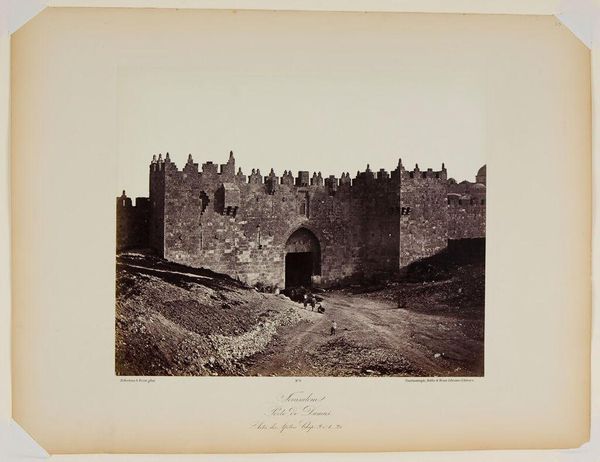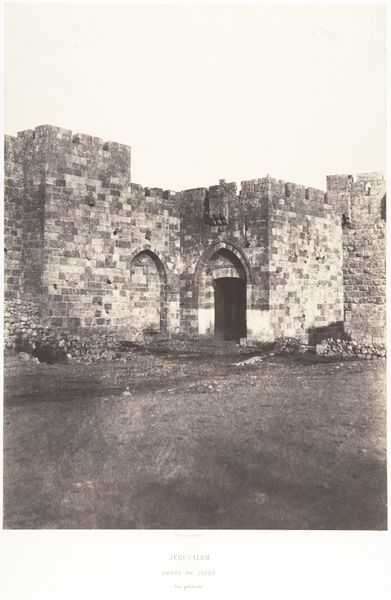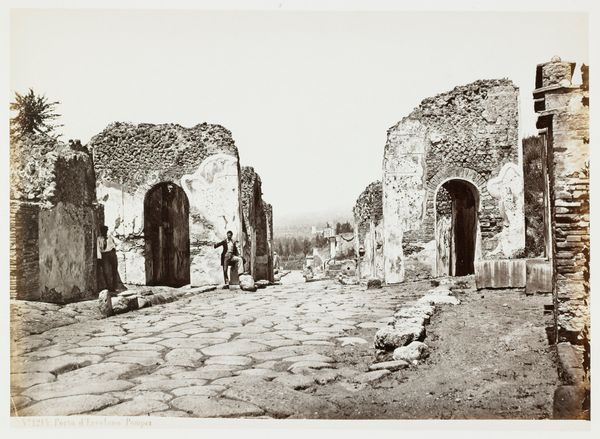
albumen-print, photography, albumen-print, architecture
#
albumen-print
#
landscape
#
historic architecture
#
traditional architecture
#
photography
#
ancient-mediterranean
#
orientalism
#
19th century
#
cityscape
#
albumen-print
#
architecture
Dimensions: 8 13/16 x 11 1/16 in. (22.38 x 28.1 cm) (image)11 x 14 in. (27.94 x 35.56 cm) (mount)
Copyright: Public Domain
Curator: Looking at this image, I feel immediately transported—there's a weighty stillness. A certain immutability. Editor: Agreed. Félix Bonfils's albumen print, "Porte de Damas à Jerusalem" from the 1870s, holds that enduring quality. One can feel the passage of time, the very weight of history in the walls before us. I wonder what socio-political narratives this gate has witnessed. Curator: Absolutely! I see echoes of medieval fortifications, and even earlier Roman gateways, layered in this one structure. The gate itself serves as a potent symbol of transition, marking thresholds between worlds—both physical and spiritual. Editor: I'm curious about Bonfils's perspective. His choice of albumen print, common at the time, almost romanticizes the scene through the warm, sepia tones. We see a monumental structure, yes, but filtered through a colonial lens, possibly softening the stark realities of occupation and power. Curator: Perhaps, but the detail is exquisite. Consider how the texture of the stone is captured, each block revealing a different facet depending on the angle of light. It's not simply documentation; it's an invitation to contemplate the stones as symbols of endurance and faith. Editor: But endurance for whom, and faith in what? Jerusalem, specifically this Damascus Gate, has always been a contested space. The photograph might appear neutral, a mere record, but it participated in shaping a Western gaze on the "Orient," often erasing the complex, living history of the local communities. Curator: True. Though for viewers at the time, images like this offered a sense of pilgrimage, allowing people to access places both geographically distant and culturally significant. These kinds of photographs played an important role in shaping collective imaginaries of sacred spaces. Editor: And now we must acknowledge our own positioned gaze. How we approach archival images and our understanding of the world now requires intersectional awareness that allows us to unpack historic Orientalist frameworks. How does history shape place, identity, and experience through conflict? Curator: Precisely. The layers of interpretation are as palpable as the layers of stone in the gate itself, reminding us of the past that exists materially, that defines culture, and the memory of which all impacts what comes next. Editor: Indeed, a singular image opens a gateway—pardon the pun—to exploring history, power, and representation.
Comments
No comments
Be the first to comment and join the conversation on the ultimate creative platform.
